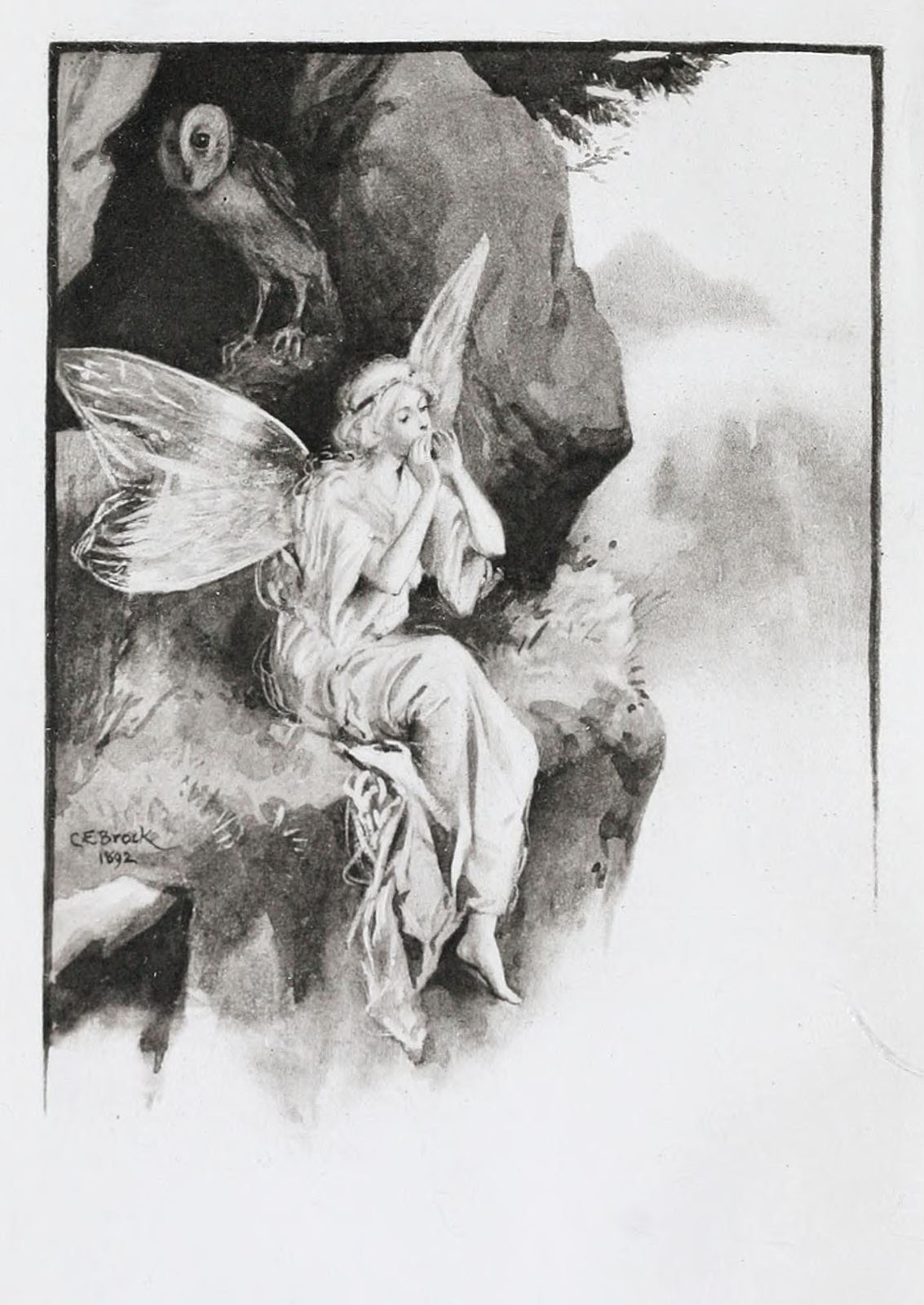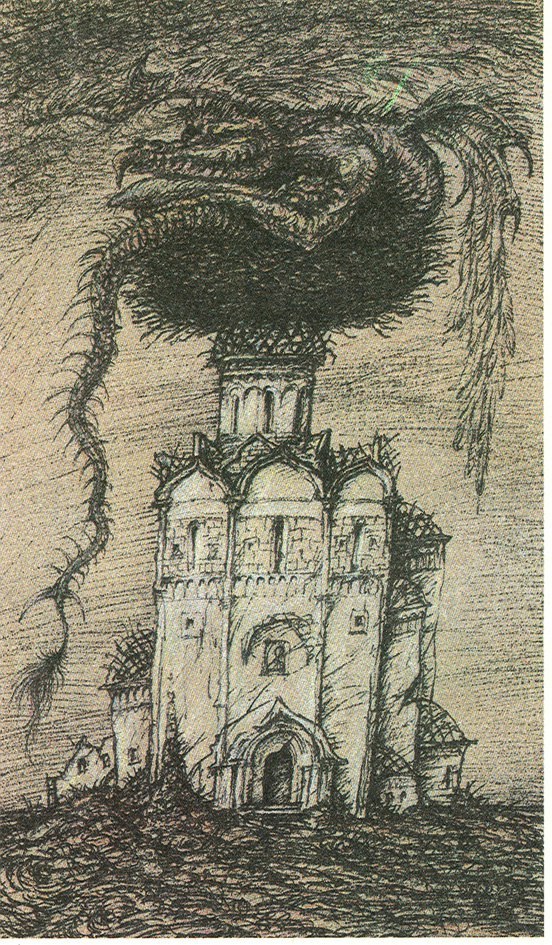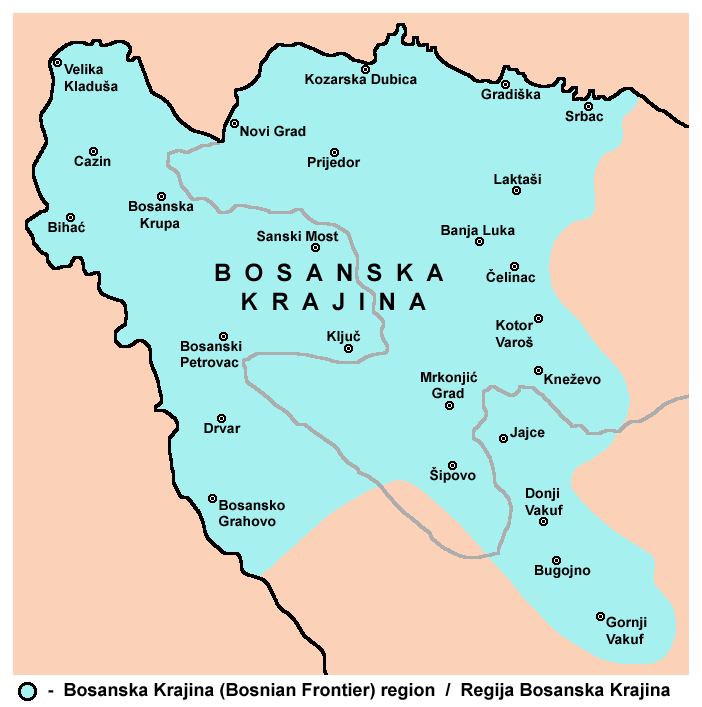|
Alija Đerđelez
Gjergj Elez Alia or Đerzelez Alija is a legendary character found in the epic poetry and literature of Bosnia and Herzegovina, Gora, Kosovo and northern Albania. The legendary character is believed to have been a popular Muslim epic hero of the Bosnian Krajina (frontier region) from the end of the 15th century. He is one of the well known legendary heroes and a symbol of brotherly loyalty to both the Bosniaks and Albanians. Name The name of the legendary character is spelled in , in Bosnian ''Đerzelez Alija, Đerđelez Alija or Djerdjelez Alija'', in , in sh-Cyrl-Latn, Ђерзелез Алија, Đerzelez Alija, in . The name ''Gürz'' is derived from the Turkish word ''gürzi'' ( mace) and means warrior with the mace. The name ''Gjergj'' is the Albanian rendering of ''George'', which is pronounced by Bosniaks the same way as in Albanian, but spelled as ''Đerđ/Djerdj'' in Bosnian. The name ''Gjergjelez'' have been explained as a compound of ''Gjergj'' and ''Elez'', the ... [...More Info...] [...Related Items...] OR: [Wikipedia] [Google] [Baidu] |
Bosnia And Herzegovina
Bosnia and Herzegovina, sometimes known as Bosnia-Herzegovina and informally as Bosnia, is a country in Southeast Europe. Situated on the Balkans, Balkan Peninsula, it borders Serbia to the east, Montenegro to the southeast, and Croatia to the north and southwest, with a coast on the Adriatic Sea in the south. Bosnia (region), Bosnia has a moderate continental climate with hot summers and cold, snowy winters. Its geography is largely mountainous, particularly in the central and eastern regions, which are dominated by the Dinaric Alps. Herzegovina, the smaller, southern region, has a Mediterranean climate and is mostly mountainous. Sarajevo is the capital and the largest city. The area has been inhabited since at least the Upper Paleolithic, with permanent human settlement traced to the Neolithic cultures of Butmir culture, Butmir, Kakanj culture, Kakanj, and Vučedol culture, Vučedol. After the arrival of the first Proto-Indo-Europeans, Indo-Europeans, the area was populated ... [...More Info...] [...Related Items...] OR: [Wikipedia] [Google] [Baidu] |
Sanjak Of Smederevo
The Sanjak of Smederevo (, ), also known in historiography as the Pashalik of Belgrade (, ), was an Ottoman Empire, Ottoman administrative unit (sanjak) centered on Smederevo, that existed between the 15th and the outset of the 19th centuries. It was located in the territory of present-day Central Serbia. Administration Eyalet belonging The sanjak belonged to Rumelia Eyalet between 1459 and 1541, and again between 1716 and 1717 and again 1739 and 1817 (nominally to 1830), to Budin Eyalet between 1541 and 1686, and to Temeșvar Eyalet between 1686 and 1688 and again between 1690 and 1716. Borders During the governorship of Hadji Mustafa Pasha (1793–1801), the administration was expanded eastwards to include the Kladovo area, until then part of the Sanjak of Vidin. History 15th century The Sanjak of Smederevo was formed after the fall of the Serbian Despotate in 1459, and its administrative seat was Smederevo, at the time defended by imposing Smederevo Fortress. Ottoman sources n ... [...More Info...] [...Related Items...] OR: [Wikipedia] [Google] [Baidu] |
Fairies
A fairy (also called fay, fae, fae folk, fey, fair folk, or faerie) is a type of mythical being or legendary creature, generally described as anthropomorphism, anthropomorphic, found in the folklore of multiple European cultures (including Celtic mythology, Celtic, Slavic paganism, Slavic, Germanic folklore, Germanic, and French folklore, French folklore), a form of Supernatural#Spirit, spirit, often with metaphysical, supernatural, or preternatural qualities. Myths and stories about fairies do not have a single origin but are rather a collection of folk beliefs from disparate sources. Various folk theories about the origins of fairies include casting them as either demoted angels or demons in a Christian mythology, Christian tradition, as deities in Paganism, Pagan belief systems, as Spirit (supernatural entity), spirits of the dead, as Prehistory, prehistoric precursors to humans, or as spirits of nature. The label of ''fairy'' has at times applied only to specific Magic (su ... [...More Info...] [...Related Items...] OR: [Wikipedia] [Google] [Baidu] |
Prince Marko
Marko Mrnjavčević ( sr-Cyrl, Марко Мрњавчевић, ; – 17 May 1395) was the ''de jure'' Serbia in the Middle Ages, Serbian king from 1371 to 1395, while he was the ''de facto'' ruler of territory in western Macedonia (region), Macedonia centered on the town of Prilep. He is known as Prince Marko (; sr-Cyrl, Краљевић Марко, ''Kraljević Marko'', ) and King Marko (; sr-Cyrl, Краљ Марко; ) in South Slavs, South Slavic oral tradition, in which he has become a major character during the period of Ottoman Empire, Ottoman rule over the Balkans. Marko's father, King Vukašin Mrnjavčević, Vukašin, was co-ruler with Serbian Tsar Stefan Uroš V, whose reign was characterised by weakening central authority and the gradual disintegration of the Serbian Empire. Vukašin's holdings included lands in north-western Macedonia and Kosovo. In 1370 or 1371, he crowned Marko "young king"; this title included the possibility that Marko would succeed the chi ... [...More Info...] [...Related Items...] OR: [Wikipedia] [Google] [Baidu] |
Slavic Dragon
A Slavic dragon is any dragon in Slavic mythology, including the Polish żmij, Russian '' zmei'' (or ; ), Ukrainian (), and its counterparts in other Slavic cultures (See below). The physiognomy resembles a combination of the classical dragon and a snake (as a winged serpent), less often depicted with two legs and/or more than one head. Similar representations include the Aztec Quetzalcoatl ( Feathered Serpent) or Caduceus ( Sumerian symbol of the god Enki borrowed into Greek mythology). The Romanian '' zmeu'' could also be deemed a "Slavic" dragon, but a non-cognate etymology has been proposed. A ''zmei'' may be beast-like or human-like (assuming dragon form in air, human form on ground), sometimes wooing women, but often plays the role of chief antagonist in Russian literature. In the Balkans, the ''zmei'' type is overall regarded as benevolent, as opposed to malevolent dragons known variously as '', '' ala'' or ''hala'', or ''aždaja''. The Polish ''smok'' (e.g. ... [...More Info...] [...Related Items...] OR: [Wikipedia] [Google] [Baidu] |
John Hunyadi
John Hunyadi (; ; ; ; ; – 11 August 1456) was a leading Kingdom of Hungary, Hungarian military and political figure during the 15th century, who served as Regent of Hungary, regent of the Kingdom of Hungary (1301–1526), Kingdom of Hungary from 1446 to 1453, under the minor Ladislaus the Posthumous, Ladislaus V. According to most contemporary sources, he was the member of a Nobility in the Kingdom of Hungary, noble family of Principality of Wallachia, Wallachian Hunyadi family, ancestry. Through his struggles against the Ottoman Empire, he earned for himself the nickname "Turk-buster" from his contemporaries. Due to his merits, he quickly received substantial land grants. By the time of his death, he was the owner of immense land areas, totaling approximately four million cadastral acres, which had no precedent before or after in the Kingdom of Hungary. His enormous wealth and his military and political weight were primarily directed towards the purposes of the Hungarian– ... [...More Info...] [...Related Items...] OR: [Wikipedia] [Google] [Baidu] |
Bosanska Krajina
Bosanska Krajina ( sr-Cyrl, Босанска Крајина, , ) is a geographical region, a subregion of Bosnia, in western Bosnia and Herzegovina. It is enclosed by several rivers, namely the Sava (north), Glina (northwest), Vrbanja and Vrbas (east and southeast, respectively). The region is also a historic, economic, and cultural entity of Bosnia and Herzegovina, noted for its preserved nature and wildlife diversity. The largest city and historical center of the region is Banja Luka. Other cities and towns include Bihać, Bosanska Krupa, Bosanski Petrovac, Čelinac, Bosansko Grahovo, Bužim, Cazin, Drvar, Gradiška, Ključ, Kostajnica, Kozarska Dubica, Kneževo, Kotor Varoš, Laktaši, Mrkonjić Grad, Novi Grad, Prijedor, Sanski Most, Šipovo, Velika Kladuša, Teslić, and Prnjavor. Bosanska Krajina has no formal status; however, it has a significant cultural and historical identity that was formed through several historic and economic events. The territory of Bos ... [...More Info...] [...Related Items...] OR: [Wikipedia] [Google] [Baidu] |
Erlangen Manuscript
Erlangen Manuscript () is a Serbian Cyrillic manuscript dated between 1716 and 1733 that contains one of the earliest written collections (217 songs) of epic poetry written in the Serbian language. The unnamed author wrote the manuscript for the Austrian military commander Prince Eugene of Savoy, a governor in Habsburg-occupied Serbia. It was discovered in 1913 by the Germanist Elias von Steinmeyer in the University Library in Erlangen and studied in depth by Gerhard Gesemann who used it for his habilitation in 1921. It was first published to the public in Sremski Karlovci in 1925. The Erlangen Manuscript is mixture of Christian and Muslim Muslims () are people who adhere to Islam, a Monotheism, monotheistic religion belonging to the Abrahamic religions, Abrahamic tradition. They consider the Quran, the foundational religious text of Islam, to be the verbatim word of the God ... songs. Estimates of the number of Muslim songs vary between 36 and 46. References Sources ... [...More Info...] [...Related Items...] OR: [Wikipedia] [Google] [Baidu] |
Vuk The Dragon-Despot
VUK or Vuk may refer to: *Vuk (name), South Slavic given name ** Vuk, Ban of Bosnia (), a member of the Kotromanić dynasty ** Vuk Karadžić (1787–1864), Serbian language reformer and folklorist, often referred to simply as Vuk * ''Vuk'' (film), an animated Hungarian movie from 1981 * ''Vuk'' (novel), a 1965 novel by Istvan Fekete *Vuk, a D'Bari character in the 2019 film ''Dark Phoenix'' *Vuk (computer), 1980s Yugoslavian computer prototype *VUK-T (glider), often called VUK, a 1970s high-performance Yugoslavian sailplane *'' Vuk.'', taxonomic author abbreviation for Ljudevit Vukotinović (1813–1893), Croatian naturalist *Volume Unique Key The Advanced Access Content System (AACS) is a standard for content distribution and digital rights management, intended to restrict access to and copying of the post- DVD generation of optical discs. The specification was publicly released i ..., in the AACS encryption system from the 2000s * Value Up Kit * Vertical up-kicker, a p ... [...More Info...] [...Related Items...] OR: [Wikipedia] [Google] [Baidu] |
Bugarštica
Bugarštica ( or ), originally known as Bugaršćica, is a form of epic and ballad oral poetry, which was popular among South Slavs mainly in Dalmatia and Bay of Kotor from 15th until the 18th century, sung in long verses of mostly fifteen and sixteen syllables with a caesura after the seventh and eighth syllable, respectively. Etymology The term ''bugaršćica'' and ''bugaršćina'' for song and ''bugariti'' for singing were first recorded in 1550s by Petar Hektorović and published in '' Fishing and Fishermen's Talk'' (1568), in his reference to two songs he collected from fishermen from the Adriatic island of Hvar. Juraj Baraković recorded ''bugarskice'', while Ivan Gundulić ''bugarkinje''. In Central Croatia were sometimes named as ''popijevka'' or ''popevka''. The form ''bugarštica'' is a 19th-century invention as the contemporary Serbo-Croatian standard language does not have "consonantal cluster '' šć''", being more a technical term, but since 1980s ''bugaršćica'' ... [...More Info...] [...Related Items...] OR: [Wikipedia] [Google] [Baidu] |
Mrkonjić Grad
Mrkonjić Grad ( sr-cyrl, Мркоњић Град, ) is a town and municipality in Republika Srpska, Bosnia and Herzegovina. It is located in the Bosanska Krajina region, between Banja Luka and Jajce. As of 2013, the municipality has a population of 16,671 inhabitants, while the town of Mrkonjić Grad has a population of 7,915 inhabitants. Name The town changed its name several times in history: Gornje Kloke, Novo Jajce, Varcarev Vakuf, Varcar Vakuf, and ultimately the present one. The last renaming took place in 1924 after King Peter I of Serbia, who had taken the ''Pseudonym#Noms de guerre, nom de guerre'' "Mrkonjić" while fighting in the uprising (1875–78) against the Ottoman Empire. History From 1929 to 1941, Mrkonjić Grad was part of the Vrbas Banovina of the Kingdom of Yugoslavia. When the German and Italian Independent State of Croatia#Zones of influence, Zones of Influence were revised on 24 June 1942, Varcar Vakuf fell in , administered civilly by Croatia and milit ... [...More Info...] [...Related Items...] OR: [Wikipedia] [Google] [Baidu] |
Türbe
''Türbe'' refers to a Muslim mausoleum, tomb or grave often in the Turkish-speaking areas and for the mausolea of Ottoman sultans, nobles and notables. A typical türbe is located in the grounds of a mosque or complex, often endowed by the deceased. However, some are more closely integrated into surrounding buildings. Many are relatively small buildings, often domed and hexagonal or octagonal in shape, containing a single chamber. More minor türbes are usually kept closed although the interior can be sometimes be glimpsed through metal grilles over the windows or door. The exterior is typically masonry, perhaps with tiled decoration over the doorway, but the interior often contains large areas of painted tilework, which may be of the highest quality. Inside, the body or bodies repose in plain sarcophagi, perhaps with a simple inscription, which are, or were originally, covered by rich cloth drapes. Usually these sarcophagi are symbolic, and the actual body lies below t ... [...More Info...] [...Related Items...] OR: [Wikipedia] [Google] [Baidu] |





